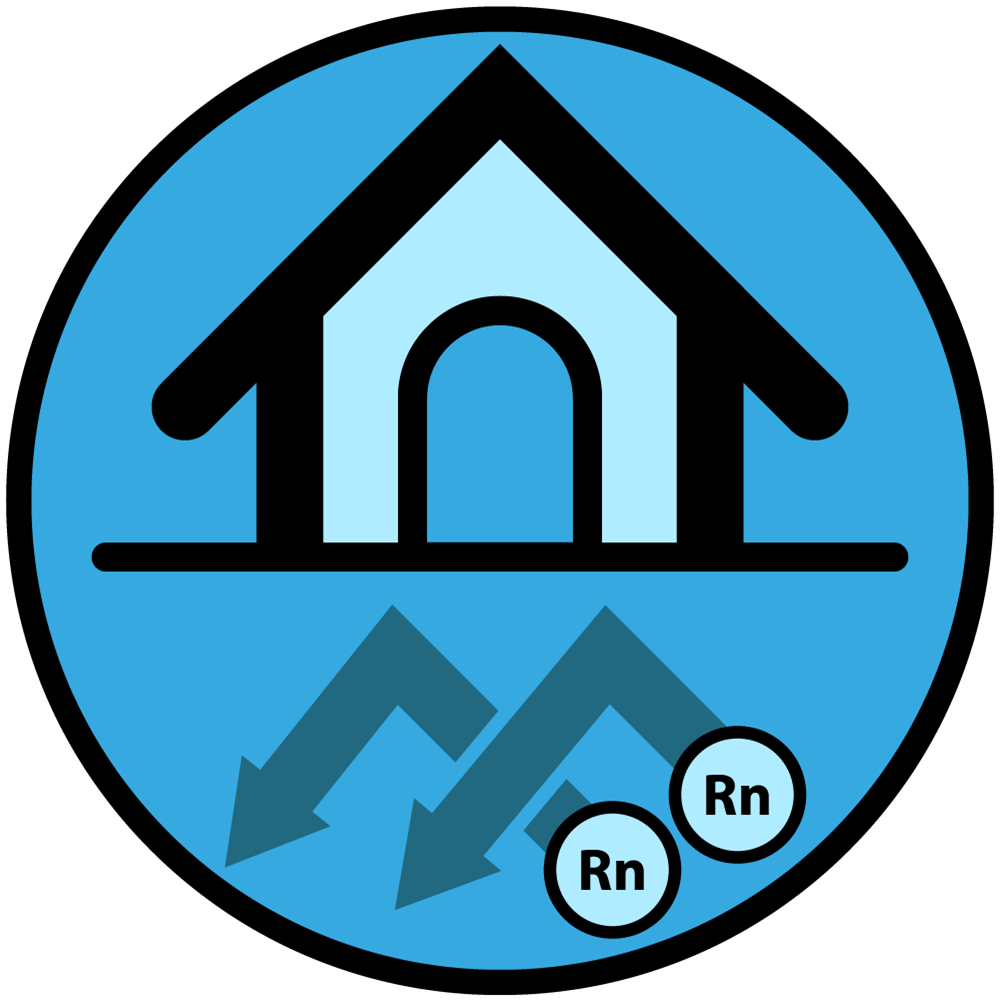Exposure to radon gas represents a growing concern in Spain, especially due to its association with lung cancer.

According to data from the Cancer Observatory of the Spanish Association Against Cancer (AECC), lung cancer is one of the most common types of cancer in Spain, with a significant mortality rate. In 2023, it was recorded that 18.2% of cancer deaths in Spain were due to lung cancer. According to data from the International Agency for Research on Cancer, it is estimated that around 40% of registered cases are due to long-term inhalation of radon gas, underscoring the need to detect and mitigate the effects of this dangerous gas.
What is radon gas?
Radon gas is a radioactive noble gas that forms naturally from the decay of uranium present in soil and rocks. Although it is colorless, odorless and tasteless, it can have serious effects on human health when it accumulates in enclosed spaces. Radon is of particular concern because, when inhaled, its radioactive particles can damage lung tissue and increase the risk of developing lung cancer.
Radon gas is a gaseous chemical element belonging to the noble gas group and is colorless, odorless and tasteless. It originates from the natural decay of uranium present in soil, rocks and groundwater. Uranium, a radioactive element, gradually decays into a series of decay products, one of which is radon.
How to measure or detect radon gas?
The release of radon into the indoor air of buildings can occur through cracks in the floor, fissures in walls, or groundwater ingress. Once inside buildings, radon can accumulate in enclosed spaces, especially in basements and first floors where ventilation is limited.
Measurement of radon gas is essential to assess and manage the risks associated with its presence. Specific monitoring devices can be used to measure radon levels in indoor air. These devices are typically placed in key areas of a building for a set period of time to assess the concentration of radon present.
RADON ACTIONS
In addition, it is important to have companies, such as SOCOTEC, perform periodic tests to ensure an accurate and continuous assessment of radon levels in the indoor environment. These are some of the actions that can be taken:

What health problems can radon gas cause?
Prolonged exposure to radon gas can have serious consequences for human health. In addition to increasing the risk of lung cancer, radon inhalation has also been associated with other respiratory and health problems, such as chronic lung disease. Epidemiological studies have shown a clear correlation between radon exposure and increased incidence of lung cancer, underscoring the importance of addressing this environmental risk.
In which areas of the map of Spain is radon gas most commonly present?
In Spain, the presence of radon gas can vary depending on geology and other environmental factors. Some regions have been identified as having a higher incidence of radon due to their specific geological composition.
Below, we detail areas of Spain where a higher concentration of radon gas has been identified and the possible reasons for its presence:
- Galicia: In Galicia, especially in coastal and mountainous areas, a high concentration of radon gas has been recorded. This is partly due to the geological composition of the region, which includes granite and other igneous rocks containing uranium. The natural decay of uranium in these rocks releases radon, which can seep into the soil and surrounding buildings.
- Asturias: Like Galicia, Asturias has a geology rich in granite and other uranium-bearing rock formations. This abundance of uranium contributes to an increased presence of radon gas in the region. In addition, historical mining activity in Asturias may also have contributed to the release of radon into the environment.
- Extremadura: Parts of Extremadura, especially in areas near the Sierra de Guadalupe and other mountain formations, have shown elevated levels of radon gas. This can again be attributed to the geology of the region, which includes granite and metamorphic rocks that are rich in radioactive minerals such as uranium.
- Castilla y León: In Castilla y León, some areas, such as the province of Salamanca, have shown significant radon concentrations. This is partly due to the presence of granitic formations in the region, which contain uranium and other radioactive minerals. In addition, the low permeability of the soil in some areas may contribute to the accumulation of radon in the environment.
- Catalonia: In the Pyrenees areas, especially near rock formations such as granite and schist, there is a higher radon concentration due to the presence of radioactive minerals in the soil. In coastal areas such as the Maresme, the presence of radon is also significant, influenced by the varied geological composition and human activity.
What precautionary measures can be taken?
To reduce exposure to radon gas, a number of mitigation measures can be implemented. These may include improvements in ventilation of interior spaces to dilute accumulated radon, sealing cracks and crevices in foundations, and installing radon extraction systems in subway areas. In addition, it is important to conduct periodic testing to monitor radon levels in homes and take corrective action as needed.
When elevated radon levels are detected, it is important to take measures to reduce the exposure of workers or occupants of buildings. These measures may include ventilation improvements, sealing cracks in floors and walls, installing radon extraction systems and other engineeringmeasures . SOCOTEC can provide expert advice, inspection and implementationservices to ensure that environments are safe and, if not, that appropriate measures are taken and their effectiveness verified.
Would you like us to carry out radon gas inspections in any of your properties?

You might also be interested...




